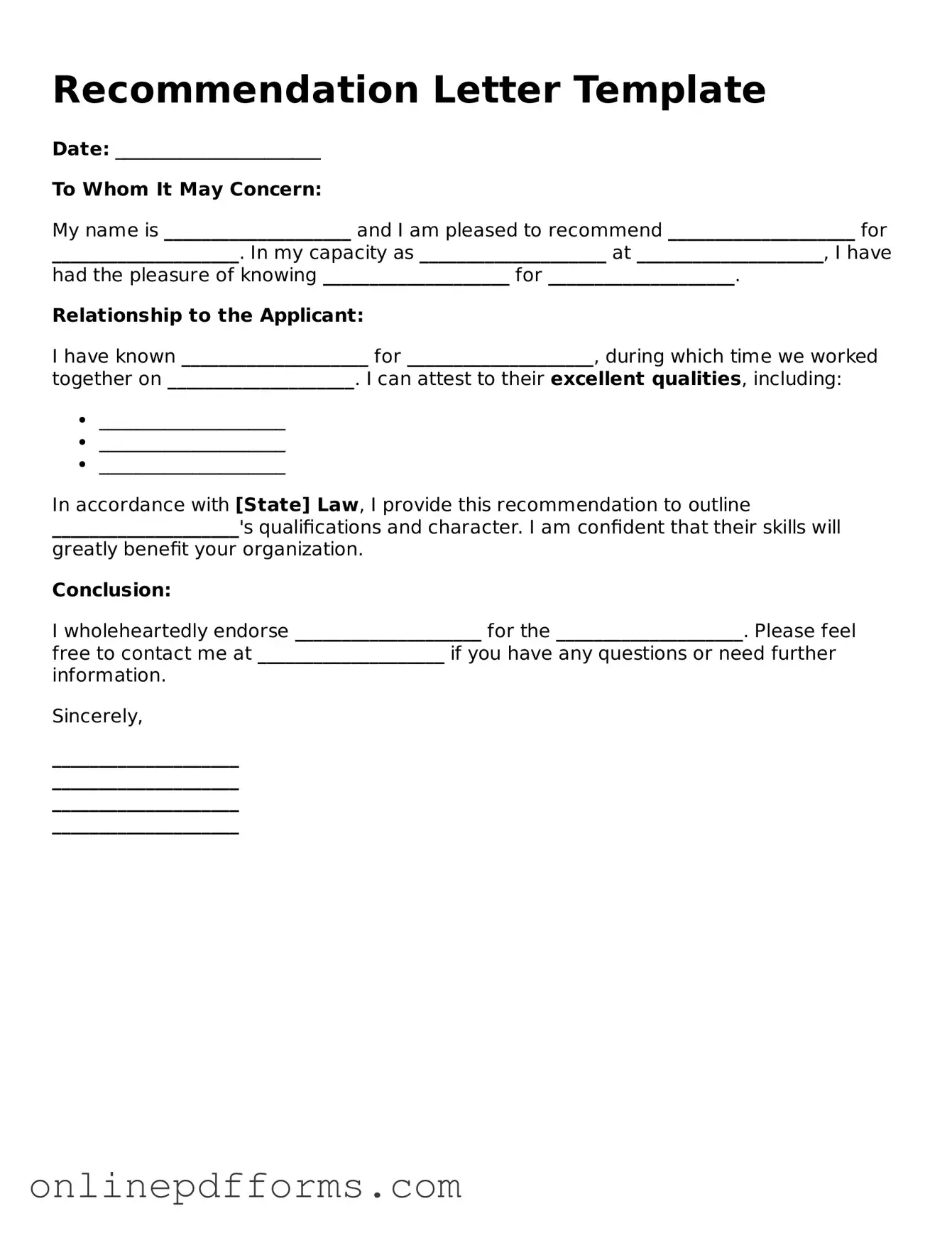A reference letter serves a similar purpose to a recommendation letter. Both documents provide insights into an individual's qualifications, skills, and character. A reference letter typically comes from a former employer, colleague, or mentor, who can vouch for the person's abilities. This document is often used in job applications or academic admissions, just like a recommendation letter. The main difference lies in the format and the level of detail; reference letters can be more informal and less structured than formal recommendation letters.
A letter of intent is another document that shares similarities with a recommendation letter. Both are often used in academic and professional settings to express interest in a position, program, or opportunity. While a recommendation letter focuses on endorsing an individual's qualifications, a letter of intent outlines the applicant's goals and motivations. This document can complement a recommendation letter by providing context about the applicant's aspirations and how they align with the opportunity at hand.
A curriculum vitae (CV) is frequently used alongside recommendation letters in academic and professional applications. While a recommendation letter provides personal insights and endorsements, a CV presents a comprehensive overview of an individual's educational background, work experience, and skills. Together, these documents create a fuller picture of the applicant, with the CV detailing qualifications and the recommendation letter adding a personal touch that highlights character and suitability.
An employment verification letter also shares a connection with recommendation letters. Both documents serve to validate an individual's work history and qualifications. An employment verification letter is typically issued by an employer to confirm the dates of employment, job title, and sometimes job responsibilities. While a recommendation letter focuses on the applicant's strengths and abilities, an employment verification letter provides factual support that can enhance the credibility of the applicant's claims.
A personal statement is another document that can be compared to a recommendation letter. Both are often required in applications for academic programs or professional opportunities. A personal statement allows the applicant to present their own narrative, detailing their experiences, motivations, and aspirations. In contrast, a recommendation letter offers an external perspective on the applicant's qualifications. Together, they provide a well-rounded view of the individual, with the personal statement showcasing self-reflection and the recommendation letter emphasizing external validation.
